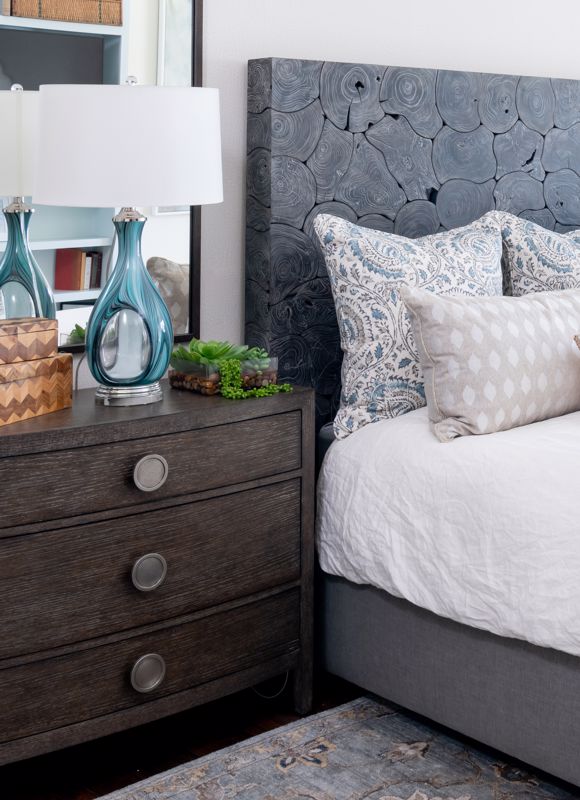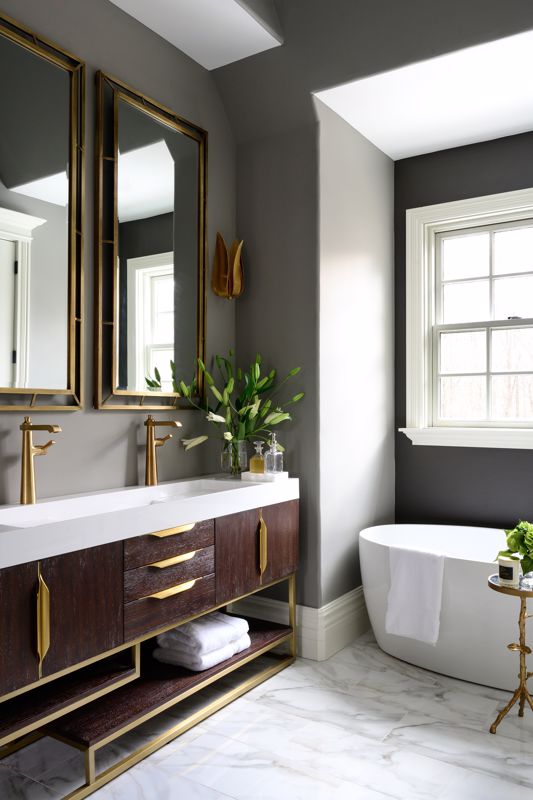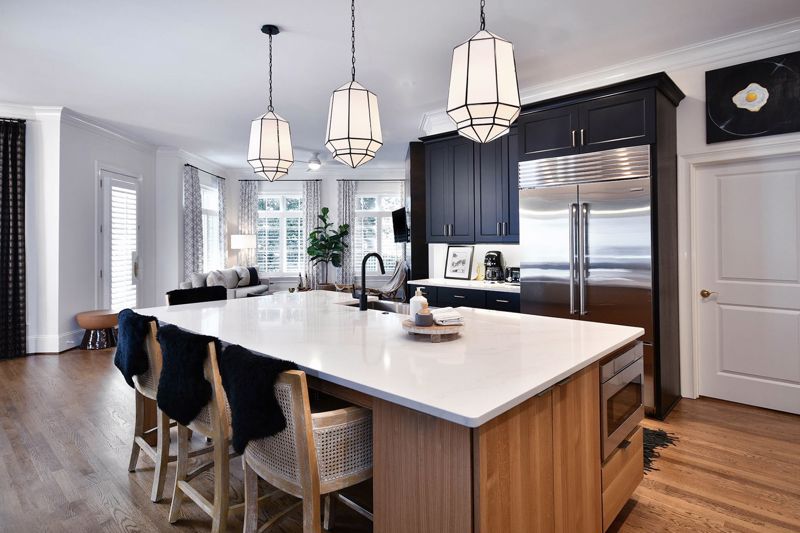Something Old and Something New — Transitional Interior Design
Gone is the era of simply sticking to the interior design style that’s in vogue in the current decade! These days, it’s no longer expected to conform to the design choices that are in fashion at the moment — it’s perfectly acceptable to choose whatever style suits your fancy. From minimalist to bohemian, you’re at liberty to select whatever your heart desires.
With so many options comes a lot of tough decisions to make. Perhaps you’re torn between the elegant aesthetic of days gone by (think classical Grecian decor or even vintage “dark academia”) and the sleek, modern designs of the 21st century.
But fret not, for there is one brilliant option that combines the best of both these worlds: transitional interior design. So, what’s this style? And how can you apply it to your home? Read on to find out more about this tasteful look and how you can incorporate it into any one of your rooms (or all of them).
Defining transitional interior design
Interior design trends come and go. You shouldn’t have to spend tons of time, money and energy decorating a space that will become unfashionable in a decade or less. Enter transitional interior design! By blending both traditional design and contemporary style elements, transitional spaces achieve a timeless aesthetic. But what defines these features, and how can we accurately describe transitional interior design? In response to the often stark, cold and harsh look and feel of the mid-century modern design style, this design fuses seemingly opposing styles of furniture, decor and color schemes into something that pleases the eye.
While it still features current, trendy facets, it’s more focused on achieving a warm, welcoming atmosphere without being gaudy or over the top. Transitional interior design focuses on comfortable furniture, natural textiles and fabric types, with neutral shades and minimal accent pieces and decor. It’s a very practical style that’s perfect for growing families because of its pragmatism. And, because you can pick aspects from different design preferences, you can create spaces that are unique and truly represent you.
Selecting your transitional design furniture and decor
Transitional interior design furniture aims to achieve balance and harmony by combining traditional furniture with modern furniture. Transitional furniture is elegant and slightly modern but characterized by cozy materials (upholstery, wood types and other elements.) Think minimalist cream sofas that have clean lines with plush, homely fabrics. The furniture often acts as the focal point of a room, rather than a piece of bright and bold decor or an accent wall.
This furniture style speaks for itself without needing too many additional accessories. As one might expect, the wood used in this design style is more traditional. Rather than traditional style dark mahogany, you can expect to see lighter, warmer shades in oak and acacia.
What does transitional interior design look like in different rooms? Read on for some tips on incorporating your designs in each room of your house.
The bedroom
In a transitional bedroom, you can anticipate curved lines in the bed frame, headboard and chairs, with luxurious yet understated linen and drapery (and carpets if you prefer them to hardwood floors). Many like to center their bed on a large rug to give the room a cozy feel.
 A stunning example of a transitional style bedroom.
A stunning example of a transitional style bedroom.The bathroom
Transitional interior design is particularly fun to play with when it comes to the bathroom. The bathroom is an especially great area to dabble in mixing different textures because you can select “old school” wooden flooring with chic tiles on the wall or go in the opposite direction with slate on the floor and rustic wood walls. It’s common to see a vintage porcelain clawfoot bathtub or wash basin with vintage golden taps paired with sleek tiles on the walls and floor. Alternatively, you can combine a modern sink with a traditional element like an antique wooden towel cabinet. The possibilities are endless!
 A transitional bathroom combining modern mirrors with traditional wooden cabinets.
A transitional bathroom combining modern mirrors with traditional wooden cabinets.The dining and living rooms
In dining and living rooms, pieces in this style are usually large to accommodate gathering and socializing. Instead of tiny side tables or 4-seater dining tables, a transitional living room incorporates bigger pieces such as sectionals and tables that can accommodate plenty of friends and family. This makes the space feel intimate and homely. This room is possibly the one where you’re going to place most of your decor, so color is extremely important here, but more on that in a bit.
Now, you can’t spend time in a dining room or living room if you don’t have anything to eat or drink! So, off we go to the kitchen.
The kitchen
A transitional kitchen is arguably the most popular design choice for this area of the house and the style is found here more often than in other rooms. Imagine impeccably polished marble countertops combined with gorgeous country-style cabinets. If you prefer, you can go for an impeccably sanded wooden tabletop accompanied by stylish glossy cupboards.
 Art deco lighting combined with vintage wicker bar stools in a transitional kitchen.
Art deco lighting combined with vintage wicker bar stools in a transitional kitchen.Tying everything together
Of course, regardless of the room’s function, you’ll still want to keep this design style in mind while you decorate each area of your home. Opt for a piece that is both functional and meaningful to you. For transitional decor, many people like using rugs, sculptures, decorative pillows and some metallic accessories such as side tables. Simple potted plants such as monsteras, snake or spider plants and money trees bring a room to life without going too far. You might even want to consider a small bonsai garden or terrarium housed in a fashionable glass container.
With regard to art and other little decorative pieces, opt for silver or monochrome metallic frames and materials with a more modern element. Geometric candle holders are also a fun way to add a bit of modernity to the comfort of your space. At the end of the day, sophisticated clean lines are what you’re after when you’re decorating a room in a transitional style.
Color palettes for the transitional style
As mentioned, this design choice primarily features neutral colors like cream, beige and light gray. However, you’re more than welcome to add occasional darker, richer tones like maroon, navy blue or emerald green to some of your walls or in your furniture or decor. In fact, this type of accent is a staple of the transitional style as these hues help add depth to the room without being too dark or broody.
The incorporation of these agreeable shades allows you to use your furniture as the key decorating element. Unlike the bold and often oversaturated shades of the boho (bohemian) style, the exceedingly white of the Scandinavian design or the overly dark colors of art moderne, the transitional interior design color palette will never go out of fashion!
If you’re a fan of patterns, have no fear, because many visual motifs are still very much part of the transitional interior design style. Some people choose to put patterned wallpaper on one wall to create an accent wall, while others prefer to incorporate fun designs into their rug or linen of choice. Some popular transitional style patterns include simple florals, filigrees and basic geometric designs such as interlocking triangles.
Now, no room or home is complete without the appropriate lighting. As with most elements of transitional design, the key principle here is practicality. Essentially, we’re largely looking at function over form. This design choice favors bright lighting (but not harsh, glaring fluorescents), both natural and artificial. Of course, based on your home’s architecture, there’s only so much you can do about natural lighting but with artificial lighting, choose more modern fixtures and lamps as opposed to the grand, exaggerated crystal chandeliers of yore. That said, sprucing up an otherwise contemporary room with some art deco lighting works beautifully, too!
How Decorating Den design services can help you decorate your home’s interior
Choosing between classic and contemporary design elements can seem like a daunting task. After all, because the transitional style is so customizable, there are endless interior design ideas! If you’re feeling a bit overwhelmed by all your choices, Decorating Den is here to help.
After you’ve contacted us, we’ll set up a meeting for you with one of our consultants. Your interior designer will visit your home and chat with you to get an understanding of your goals and preferred esthetic, after which they’ll design a custom plan to help you get your design just right.
Ready to make the transition to a transitional interior design? Contact us to get started!

